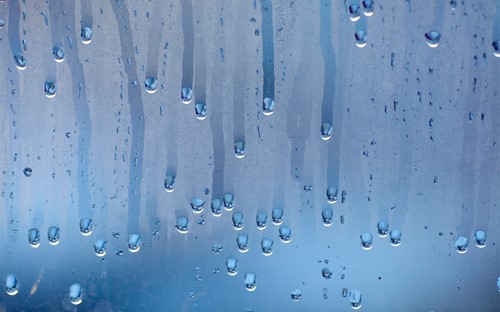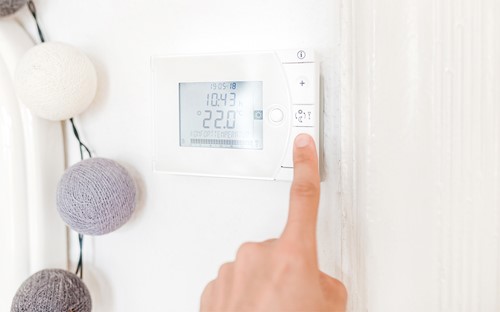
With the chill of winter making its way into our homes, you may have already switched your sheets out to flannelette and brought your winter clothes to the front of your wardrobe. But have you thought about how you are going to keep your home warm and dry this winter?
Heating is only one piece of the puzzle. To really make your home warmer, drier and, in turn, help create a healthier living environment, you need to think about how insulation, heating, ventilation and tackling dampness work together as a system – with each facet a part of the total solution. The trick is also finding the balance between keeping your home dry, warm and cosy without soaring power bills.
Insulation
Insulation is the first step to providing a warm and comfortable living environment for you and your family. Homes with no (or poorly fitted) insulation can lose up to 35% of heat and energy through the ceiling. That means the warmth from your heating is being wasted – and the $$ you spent to heat it too!
By slowing down heat movement through building materials, an insulated home is easier and cheaper to keep warm by helping prevent heat dissipating faster than you can generate it. A well-insulated home is warmer in winter, cooler in summer, better for your health, and will save you money on your energy bill.
There are many types and forms of insulation, and some are better than others at insulating. The four main products on the market are wool, polystyrene, glass wool and polyester.
They all meet Building Code standard and perform well across all areas of New Zealand. But there are different products that are suitable for certain areas of the house – whether that’s under the floor, in the ceiling, or in your walls – so you want to make sure you're getting the right one.
The ‘R Value’ is a measure of the insulation's effectiveness - the higher the R Value, the better the insulation will perform. The Building Code outlines minimum R Values, which depend on what part of the country you live in. So, the far north will have a lower minimum R Value than central plateau or South Island.

Dampness
In your quest for a warm and healthy home this winter, you need to see dampness as enemy number one. Damp air takes more energy to heat than dry air, so you'll be wasting money if you're cranking up your Heat Pump but haven't addressed the sources of dampness in your home.
The comfort of Kiwi homes can all benefit from reducing the levels of moisture we live with on a day-to-day basis. A damp home is an unhealthy home and by tackling dampness, you can help reduce the growth of mould, mildew and other nasties.
Many of the steps for removing dampness are cheap and easy fixes.
Drying clothes inside can add 5 litres of moisture per load. When using an unvented clothes dryer – ensure windows are open to let some of this excess moisture escape. Make use of good winter days to dry clothes outside. Also using the fastest spin speed on your washing machine minimises the amount of drying needed. Clothes horses can also be a culprit in driving up the moisture levels inside your home, so look at popping them into a garage or a covered outside space where possible.
Cooking can also add up to 3 litres of moisture a day to your living spaces. So use pot lids to contain steam and a range-hood or fan that vents outside. A good, externally ducted extractor fan in the kitchen can remove much of the moisture before it has the chance to find a home on your walls, ceiling or other surfaces. Also opening windows (ventilate) in the kitchen when you’re cooking helps dissipate this excess.
Showers and baths can add up to 1.5 litres per person, per day to the moisture content of your home. So always use an extractor fan when showering or taking a bath, and if possible open a window too to let the steam escape. Wipe off any water that has collected (condensation) on walls and on the inside of windows.
Ventilation
Once you've dealt with the main sources of dampness, the next step is ventilation. Good ventilation is essential for maintaining air quality and removing excess moisture from your home. It’s impossible to completely eliminate moisture in your home; we even produce it when breathing (0.2L per hour per person) – but you can significantly reduce it by making sure you air your home regularly.
Ventilation is a balancing act though - If you have too much ventilation, you'll struggle to keep your home warm and if you have too little, your air quality will suffer. Getting the balance right helps maintain good air quality while removing day-to-day moisture.
Open windows at opposite ends of the house to air it out, even if it’s for just 10 to 15 minutes each morning before you turn your Heat Pump on. It’s especially effective on sunny days. It might feel like you’re doing things backwards but opening windows (for a short while) actually makes the house warmer.
And remember to open your curtains during the day. Natural sunlight will help to dry out and warm your home for free. Just remember to close them half an hour before sunset to keep in that free heat!
Ventilating your bedroom overnight is also important for a better sleep by maintaining air quality, reducing excessive moisture and the risk of mould growth. Keep a window slightly ajar - a finger’s width should be enough in winter. Safety first though, so use security locks, bolts or latches for peace of mind.
But remember a ventilated home is not a draughty home - stop cold air getting into your home by stopping draughts around doors, windows and fireplaces and prevent the warm air escaping by blocking up unused chimneys and stopping draughts around doors and windows.

Heat
Heating is the last and final step – because you can try heating as much as you like, but if you haven’t followed the previous steps, your attempts won’t be as effective, nor as efficient.
The main advantage of Heat Pumps over other heating solutions is that they offer a very efficient form of heat. In fact, Heat Pumps are the most energy-efficient method of using electricity to heat or cool your home – and the heating output of a heat pump is 2-4 times the energy input.
The trick to making the most of your Heat Pump lies in learning how to use it properly and by making the most out of its features.
The best way to use a Heat Pump is to keep the setting low (18ºC or - 22ºC). Don't set your Heat Pump to the maximum – it won't heat the room any quicker, but it will use more energy. Programme it to turn on 15 minutes before you need it or use the Smart Wi-Fi -control feature (if available) so you can control it remotely using an App on your Smart phone.
Preparing your Heat Pump for the months ahead is also very important. In other words, don't neglect Heat Pump maintenance. Every 3 months, remove the filter from the indoor unit and give it a good vacuum. Then inspect the outdoor unit to ensure the area around it hasn't become overgrown and its air intake hasn't become clogged with foliage or debris. Keep an eye out for rust, too. It is always a good idea to schedule a professional service for your Heat Pump before the kick-off of winter.
Once you’ve warmed your home, it’s equally if not more important to keep the warmth generated in. Start by only heating the rooms that you are using, keeping doors to unused rooms shut. And don’t leave your Heat Pump on all day if you’re not there.
Avoid using the 'Auto' mode - use the 'Heating' mode. In 'Auto' mode the Heat Pump tries to maintain the set temperature by constantly changing between heating and cooling, as the room temperature fluctuates. This can result in a lot of energy wastage.
It’s normal for a Heat Pump to sometimes stop heating or blow out cold air during very cold weather, while the outdoor unit defrosts. This usually only takes a few minutes and it should then return to its set heating function.
So dust off those slippers, get out your onesie and hunker down in your warm, dry special space this winter. And remember – when the weather turns, turn to someone you can trust.